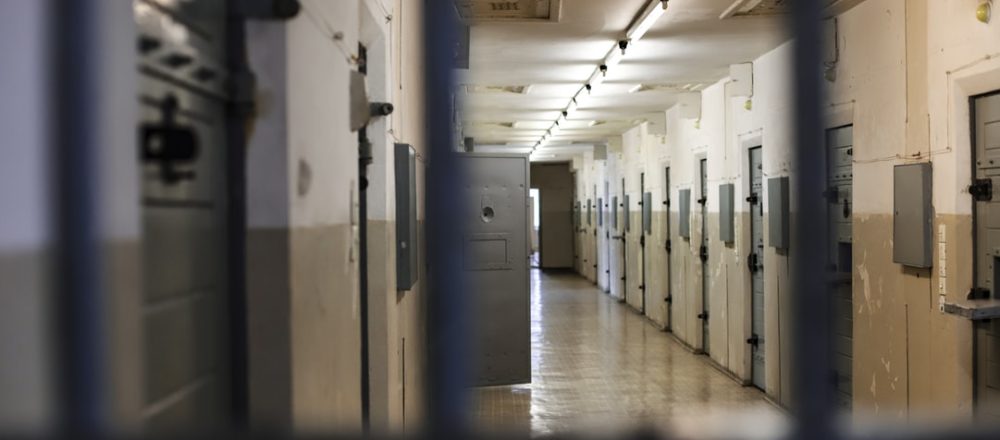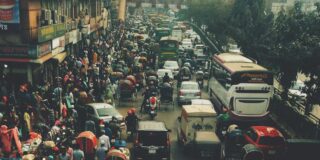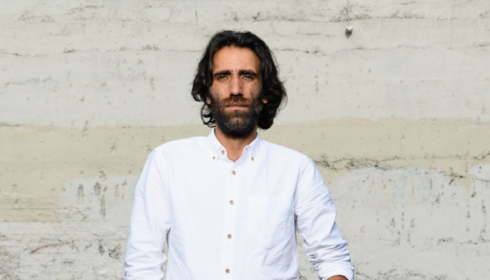In July 2016, Four Corners broadcast an investigative documentary titled Australia’s Shame, which detailed state-administered torture at Don Dale, a youth detention centre east of Darwin. Images of guards tear-gassing, choking and beating children at the youth prison provoked widespread public outrage. The defining image is that of an Aboriginal teenager, Mr V., shackled half-naked to a mechanical restraint chair while wearing a spit hood. As legal scholar Alison Whittaker writes, this “unthinkable image went everywhere – a kind of visual shorthand for the horrors Indigenous youth experience in Australian prisons”. [1]
One person simply repeated, “hot. It was – it was hot”; another remembered, “there was like snot on the walls, blood, and it stunk, cockroaches in there […] And it was hot”.
In the years since, media attention has predominantly centred on visible forms of carceral violence at Don Dale. However, the spectre of the weather – bad weather – quietly haunts the transcripts and testimonies of the subsequent Royal Commission into the Protection and Detention of Children in the Northern Territory. The force of oppressive heat, humidity and poor ventilation regularly figure in young peoples’ recollections of their time at Don Dale. These testimonies show how the imperceptibility or visual-evasiveness of certain violences doesn’t make them any less felt. And, they reveal how Australia’s carceral system weaponises more-than-human forces, like the weather.
The public hearings from the Royal Commission paint a picture of the affective weather-worlds at Don Dale. Time and time again, young people persistently recalled life at Don Dale as textured by a relenting and stifling heat. One person simply repeated, “hot. It was – it was hot”;[2] another remembered, “there was like snot on the walls, blood, and it stunk, cockroaches in there […] And it was hot”.[3] The heat had a palpable embodied impact on life at Don Dale: some kids couldn’t sleep, and would lie awake sweating all night.[4]
When considering institutionally intensified weathers, it is crucial to specify who is weathering, or enduring, these conditions. Today, every child in youth detention in the Northern Territory is Aboriginal.[5] Experiences of the weather are structured by “bodily, socioeconomic, historical and geopolitical differences”.[6] The weather is imbricated within “the ‘total climate’ of social, political and cultural existence of bodies” and, in Australia, that total climate is settler-colonialism.[7]
One young woman stated, “I felt like I was dying, couldn’t breathe properly”, not unless she “lay underneath that little vent”, the only spot where the slightest bit of cold air leaked into her cell.
The weather is not an ‘out there’ phenomenon, but intersects with, and co-produces, material worlds. As Neimanis and Hamilton assert, cultivating an attunement to “how our own bodies, and bodies of others, experience weather” necessitates attending to how meteorological and atmospheric forces are managed “architecturally, technologically, professionally and socially”.[8] Weathers collide with, spread around, and travel through carceral infrastructures. This process is not an apolitical or neutral one.
In the archival material of the Royal Commission, many young people point to the fact that the carceral infrastructures of Don Dale failed to mitigate bad weather. Describing the cells at Don Dale, two people remembered, “the cells did not have air conditioning and it was extremely hot”,[9] and “in the [High Security Unit] cells, it is very hot and there are no fans”.[10] Architecturally, the ventilation was inadequate, meaning cells were stuffy, stifling, and the air was stale.[11] This violence is cumulative and deeply embodied, so as to effect something as simple as the act of breathing. One young woman stated, “I felt like I was dying, couldn’t breathe properly”, not unless she “lay underneath that little vent”, the only spot where the slightest bit of cold air leaked into her cell.[12]
At times, guards harnessed the weather as a form of overtly gratuitous power, with one child remembering, “I was put on a 24 hour lock down where part of my punishment was that the guards took away my fan”.
While “the system is broken” is a common catchcry response to entropic and ailing infrastructures, prison abolitionists warn us “not to think of the prison system as broken”.[13] Rather, as Ruth Wilson Gilmore and Craig Gilmore insist, “we should imagine it is working and think about what that means”.[14] Put differently, the way the weather leaks – or is co-opted – into Don Dale’s carceral apparatus is no mistake.
There exists a myriad of evidence to suggest that the Northern Territory government were aware of this infrastructural violence, and yet failed to address the thermal conditions of cells. Here, it becomes clear that the weather was not a neutral fact of life at Don Dale; it was deliberately weaponised by the carceral system. At times, guards harnessed the weather as a form of overtly gratuitous power, with one child remembering, “I was put on a 24 hour lock down where part of my punishment was that the guards took away my fan”.[15]
Mostly, however, the NT Government weaponised the weather according to structurally and materially embedded – less-visible and less-overt – modalities. In 2013, an official visitor reported to the NT Minister for Justice that two topics dominated the complaints made by children Don Dale: along with food, “the other universal topic was the lack of air conditioning, and the discomfort it caused”.[16] The Royal Commission found that:
[a] 2014 review noted that temperatures in two blocks exceeded 35 degrees Celsius. Children and young people told Official Visitors that the heat caused them to become ‘irritable’ and ‘get into trouble’ and disturbed their sleep […] Official Visitor reports record that the Northern Territory Government decided not to repair or replace the air-conditioning.[17]
Government non-action and inaction maintained weather-worlds at Don Dale that were deliberately indifferent to the intense heat of Darwin’s tropical climate.
Nayuka Gorrie and Witt Church write, “jail is something we take as part of the furniture in the settler state […] Now more than ever, we need new strategies to address harm and not systems founded on violence”.
When institutions, or governments, fail to act in relation to identified problems, this non-decision is wilful. Critical theorist Sara Ahmed calls this a mechanism of “non-performativity: when naming something does not bring something into effect”.[18] When interrogated about their non-decision, NT Government officials deferred responsibility, framing the problem as a fiscal and medical one. As well as the costs with installing fans and air-conditioning being “too high”, NT Government officials stated, “they wanted to replace the air-conditioning but was advised this would create hanging points”.[19] The fact that children could not bear to weather the prison conditions at Don Dale was cited as the very reason for failing to improve those conditions.
As climate crises accelerate, so too does the extremity of everyday weathers. In Australia, record-breaking temperatures and heatwaves are an increasingly common occurrence. Just last December, after being forced to endure 50-degree heat in chronically overcrowded and un-air-conditioned cells, people rioted at the overcrowded Alice Springs Correctional Centre.[20] In the context of these climactic intensifications, it is imperative that we do not forget people living in Australian prisons.
However, prison reform and infrastructural tinkering aren’t enough. Writing on prison abolition in Australia, Nayuka Gorrie and Witt Church write, “jail is something we take as part of the furniture in the settler state […] Now more than ever, we need new strategies to address harm and not systems founded on violence”.[21]
The weather, settler-colonialism, infrastructural inequalities, the carceral system: these are all deeply entangled forces. Ruth Wilson Gilmore, the formidable activist and prison abolitionist, has a profound way of thinking about which lives, human and more-than human, are collectively sustained in-and-around prisons. She says, “where life is precious, life is precious”. The weaponisation of heat against Aboriginal children at Don Dale draws into view the necessity that prison abolition is practiced as “deliberately everything-ist […] about the entirety of human-environmental relations”.[22] Where life is precious, life is precious.
NB — The archival material cited in this essay is publicly available from the Royal Commission into Protection and Detention of Children in the Northern Territory.
[1] Whittaker, A. (2018) ‘The Unbearable Witness, Seeing: A Case for Indigenous Methodologies in Australian Soft Law’, Pandora’s Box, 25, p. 23.
[2] BR (2017b) “Closed court – transcript of proceedings”, 21 March, p. 6.
[3] AS (2017a) “Closed court – transcript of proceedings”, 22 March, p. 17.
[4] BH (2017) “Statement”, Exhibit 118.001, 12 February, p. 6.
[5] Allam, L. (2019) ‘‘System is broken’: all children in NT detention are Aboriginal, officials say’, The Guardian, May 31.
[6] Neimanis, A. and Hamilton, J. M. (2017) ‘The weather is now political‘, The Conversation.
[7] Neimanis, A. and Hamilton, J. M. (2018) ‘weathering’, Feminist Review, 118, p. 82.
[8] Neimanis and Hamilton, ‘The weather is now political’.
[9] AM (2017) “Statement”, Exhibit 270.001, 11 February, p. 7.
[10] CE (2017) “Statement”, Exhibit 365.000, 21 February, p. 3.
[11] AM (2017) “Statement”, Exhibit 270.001, 11 February, p. 8; BH (2017) “Statement”, Exhibit 118.001, 12 February, p. 7.
[12] AN (2017) “Closed court, session two – transcript of proceedings”, 24 March, p. 13.
[13] Gilmore, R. W. and Gilmore, C. (2007) ‘Restating the obvious’, in Sorkin, M. (ed.) Indefensible space: the architecture of national insecurity. New York: Routledge, p. 158, emphasis added.
[14] Gilmore and Gilmore, ‘Restating the obvious, p. 158, emphasis added.
[15] AM (2017) “Statement”, Exhibit 270.001, 11 February, p. 6.
[16] Williams (2013), cited in Elferink, J.W. (2017) “Statement: Annexure 16, Part 1”, Exhibition 321.018, 27 April, p. 30.
[17] Royal Commission into the Protection and Detention of Children in the Northern Territory (2017) Final Report of the Royal Commission and Board of Inquiry into the Protection and Detention of Children in the Northern Territory: Volume 2A: Australian Government, p. 93, emphasis added.
[18] Ahmed, S. (2017) Living a Feminist Life. Durham: Duke University Press, p. 106-107.
[19] Royal Commission into the Protection and Detention of Children in the Northern Territory (2017), Final Report, p. 93.
[20] Hayman, R. and Garrick, M. (2018) ‘Call for air-conditioners in ‘inhumane’ cells after outback heatwave triggers prison riot‘, ABC News, December 31.
[21] Gorrie, N. and Church, W. (2018) ‘We need to abolish prisons to disrupt a society built on inequality’, The Guardian, November 26.
[22] Ruth Wilson Gilmore, quoted in Kushner, R. (2019) ‘Is Prison Necessary? Ruth Wilson Gilmore Might Change Your Mind‘, New York Times, April 17.





